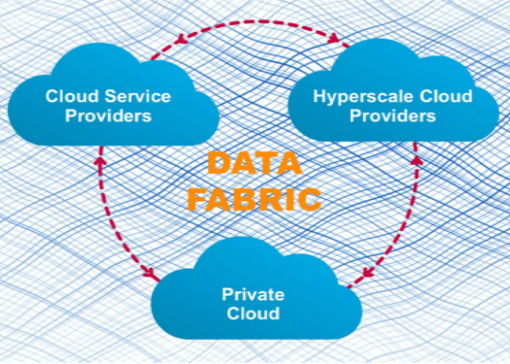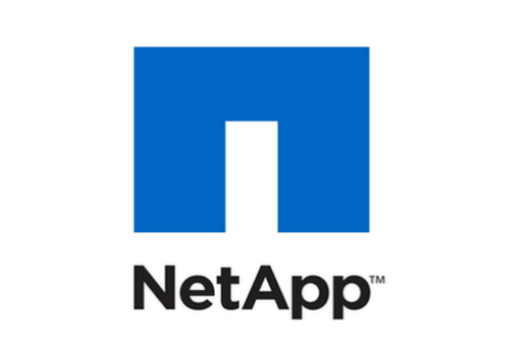Data is the fuel of the digital economy, powering business operations, enabling new customer touchpoints, and creating a plethora of opportunities for enterprises to increase their bottom line and ensure business growth. Given the transformative power of data, today’s IT organizations are seeking ways to accelerate innovation and achieve their goal of becoming a data-centric company by taking advantage of technology trends like data fabric.
Offering a holistic approach to managing data, a data fabric enables organizations to seamlessly manage applications and data across different clouds – public, private, or hybrid. By leveraging a powerful data fabric, enterprises can accelerate and protect data, cut costs, and easily build next-generation data center architectures.
SourceForge recently caught up with Eiki Hrafnsson, the Technical Director of Cloud Data Services at NetApp, to discuss the benefits of using a data fabric and the future of data management. Hrafnsson also offers ways to address the challenges of data management in today’s volatile, distributed, and ever-evolving IT landscape and shares how NetApp’s Data Fabric helps businesses integrate and simplify data management across all resources and access points of data to accelerate digital transformation.
Q: First and foremost, can you share with us a brief background of NetApp? When was the company established and what issues and/or problems do you seek to address?

Eiki Hrafnsson, the Technical Director of Cloud Data Services at NetApp
A: NetApp was founded in 1992 and soon released the world’s first networked storage appliance. It was a huge step forward at the time – which shows just how much the world has changed since those early days. Today, it’s all about digital transformation of your company, which includes hybrid cloud and multi-cloud deployment models.
We want to accelerate our customers’ digital transformation journey by providing an easier way to consistently store, manage, and protect data across their on-premises and cloud systems and connect that data to value-adding services.
To help our customers overcome this increasing complexity, NetApp created the Data Fabric, which simplifies the integration and orchestration of data for applications and analytics in clouds, across clouds, and on-premises. It’s the only architecture and set of cloud services that provides integrated data management and applications for data visibility and insights, data access and control, and data protection and security.
Q: As the data authority in hybrid cloud, what do you think are the essential attributes that an organization needs to take into account in order to become a data-centric company? And how can NetApp help businesses have a data-centric view of their IT infrastructure?
A: There’s a lot of talk about becoming a data-centric company, but this doesn’t mean the same thing to everyone. For me, a data-centric company is capable of unleashing the full potential of its data, which means that no matter where the data resides or how distributed it is among on-premises systems or private clouds and cloud vendors, a company can ensure that the data is:
- Protected. Data is protected through easy-to-apply security and governance policies.
- Visible. Organizations gain full visibility into all their data.
- Mobile. There is a secure, seamless way to manage applications and data, regardless of where or how the data is stored. This eliminates data silos to promote greater business insight.
- Accessible. Every application, service and every user has access to the data they need.
- Vendor Independent. The organization does not have to worry about vendor lock-in and can move data wherever it needs to
- Scalable. Additional storage is always available incrementally, eliminating the cost of over-specification.
Becoming a data-centric business starts with a shift in attitude based on recognizing that the only way to ensure these capabilities is with a broad, systematic, secure move to the cloud. The NetApp Data Fabric is designed to make your company or customer more productive, informed and profitable.
Q: What are some of the most common challenges or difficulties involved in managing data in a hybrid cloud architecture? And in what ways can NetApp help organizations overcome these challenges?
A: The enormous influx of data creates new challenges for discovering your data, storing new data, and processing, migrating, cloning, backing up and securing your data. Developers want to take advantage of a variety of new technologies, including containers, kubernetes, object storage, open APIs, open source tools, converged infrastructures, virtualization, flash, software-defined storage and more. And they want to do this in a hybrid and multi-cloud environment with the freedom to move applications and workloads to the optimal environment as their needs change. In order to successfully do this, data must be tracked and managed meticulously.
Managing, controlling, and orchestrating all this is already a difficult task, but the data flowing through the company – this critical asset – presents its own challenges in this new cloud environment. First, once data is in a particular cloud, it can be difficult and expensive to move. And no matter the type of data or where the data resides, data security, data protection, and data governance are essential for ensuring regulatory compliance. But each environment has a different set of tools, APIs, and management software, which makes it difficult to apply consistent policies to data. All this can make it difficult to ensure visibility into how the data stored in the cloud is protected and governed, which can put the business at risk. It can also make it difficult to integrate new technologies that could benefit the business.
This makes effective data management and mobility a foundation of the hybrid cloud architecture. NetApp provides a secure, seamless way to manage applications and data across clouds, regardless of their underlying storage systems. By connecting the clouds, developers can draw from the resources of each, move data and applications to new cloud services, and put every workload in the most appropriate place – all with the visibility to ensure security and compliance.
Q: What exactly is a Data Fabric? Why should organizations make this a part of their company’s hybrid cloud strategy and data management plan?
A: The NetApp Data Fabric simplifies the integration and orchestration of data for applications and analytics in clouds, across clouds and on-premises to accelerate digital transformation. Only NetApp can deliver a Data Fabric with consistent data services for data visibility and insights, data access and control, and data protection and security.
 Today, the Data Fabric defines the NetApp technology architecture for hybrid cloud, that is, the products, services, and partnerships that help developers and architects seamlessly manage data across their diverse technology resources, including flash, disk, and cloud. This gives them the flexibility to choose the right set of resources to meet the needs of applications and the freedom to change them whenever they want. Over time, we will continue expanding the Data Fabric to cover more environments and to deliver fully on five major design principles:
Today, the Data Fabric defines the NetApp technology architecture for hybrid cloud, that is, the products, services, and partnerships that help developers and architects seamlessly manage data across their diverse technology resources, including flash, disk, and cloud. This gives them the flexibility to choose the right set of resources to meet the needs of applications and the freedom to change them whenever they want. Over time, we will continue expanding the Data Fabric to cover more environments and to deliver fully on five major design principles:
- Control and governance of data regardless of its location – on-premises, near the cloud, or in the cloud via open APIs and consistent user interfaces.
- Freedom to choose and change cloud, application ecosystem, delivery methods, storage systems, service levels and deployment models, including the use of containers and Kubernetes which offer a streamlined way to build, test, deploy, and redeploy applications on multiple environments from a developer’s local laptop to an on-premises data center and the cloud.
- Full integration so the components in every layer of the architectural and services stack operate as one while extracting the full value of each component.
- Ease of getting data to where applications need it, when they need it, in a way they can use it.
- Consistent management of data across multiple environments using common tools and processes, regardless of where it resides.
The ability to fully deliver on these principles will enable customers to increase efficiency, improve IT responsiveness, and ultimately accelerate innovation.
Q: What sort of business results has NetApp Cloud and Data Fabric delivered for customers?
A: Here are just a couple of examples of the Data Fabric in action.
A software company that enables global media giants to quickly create and deliver content to users around the world was facing an increasing demand for up-to-the-second updates. So, they turned to Cloud Volumes ONTAP for AWS to develop features that enabled their media conglomerate customers to engage with their readers. Now, their customers get full transparency across all channels with nonstop data availability. NetApp’s Data Fabric delivered flexibility, cost efficiency, and a continuous advancement in features and services. They can now mirror data across physical environments which enables testing and meets data sovereignty requirements. In an industry as dynamic as media production, customers need solutions that can handle the complexity of a fast-paced virtual environment with high scalability demands.
In another case, the world’s largest content and native advertising platform for emerging markets faced a high level of operational performance as their business boomed. Since the advertising titan leverages predictive technology to analyze data (from geography to context) in real-time, they weren’t able to handle the influx of data that came with company growth. Unable to scale, the fast-growing company was faced with having to redesign its storage infrastructure. They needed a storage solution that was highly scalable but didn’t take away from their original strength in system testing. NetApp All Flash FAS (AFF) brought scalable improved operations, all while cutting costs. In addition to solving the original problem, NetApp offered a solution that provided advantages that the customer had never thought about. The introduction of Cloud Volumes ONTAP entered benefits such as a disaster recovery system, lesser storage disks, and the freedom to choose a cloud vendor instead of being locked into just one. Together, this hybrid solution allowed for faster time to market, complex testing, and reliable performance.
Q: How do the varied components of NetApp’s Data Fabric work together to create a single, seamless solution?
A: The Data Fabric takes a data-centric view of the technology infrastructure across the key layers of the environment: endpoints, transport, storage management, data management, ecosystem integration, and applications and services.
Across these layers, the architecture is composed of products and solutions that unbind data from underlying systems so that data can be accessed across the fabric:
- Endpoints include purpose-built and software-defined storage systems.
- Transport mechanisms connect platforms to enable fast and efficient data transfer between them.
- Storage management capabilities deliver increased performance, availability, durability, scalability, and supportability system hardware components.
- Data management capabilities securely manage access and protect data.
- Ecosystem integration connects storage systems and data management with popular application software frameworks.
- Applications and services unify management across all environments and through all layers.
With NetApp, architects can choose from a variety of building blocks at each layer, but all of them have been designed with the principles of a true data fabric in mind. NetApp also allows developers to use their tools and strategies of choice, including lightweight containers that deliver increased portability, more consistent operation, and greater efficiency.
Q: How does NetApp’s Data Fabric approach provide a differentiated solution compared to other products available in the market?
 A: The NetApp Data Fabric’s unique collection of integrated technologies and cloud services are designed to deliver comprehensive, high-value data management across hybrid and multi-cloud environments. Storage platforms, both physical, software-defined and cloud-native services establish the data store endpoints in various environments. NetApp data mover protocols and services like SnapMirror, Cloud Sync, and Fabric Pools link them together and solve the data gravity challenges that company face in a hybrid- and multi-cloud strategy. Management tools, APIs, and ecosystem integration make them easy to use collectively. Finally, Data Fabric–integrated applications and services release the true business value from the data wherever it resides.
A: The NetApp Data Fabric’s unique collection of integrated technologies and cloud services are designed to deliver comprehensive, high-value data management across hybrid and multi-cloud environments. Storage platforms, both physical, software-defined and cloud-native services establish the data store endpoints in various environments. NetApp data mover protocols and services like SnapMirror, Cloud Sync, and Fabric Pools link them together and solve the data gravity challenges that company face in a hybrid- and multi-cloud strategy. Management tools, APIs, and ecosystem integration make them easy to use collectively. Finally, Data Fabric–integrated applications and services release the true business value from the data wherever it resides.
A unique capability of the NetApp’s Data Fabric is that it provides organizations with a choice of environments for running applications, which enables a wider range of services from which to choose to meet application and analytics needs and overall business requirements. This eliminates vendor lock-in and delivers on the promise of the elusive free flowing workload where its location could be completely automated.
Q: Looking ahead, what industry movements, market trends, new technologies, or customer desires are shaping the future of Cloud and Data Fabric? How is NetApp meeting these head-on?
A: Perhaps the most important trends driving the evolution of the cloud today are around automation, machine learning, and artificial intelligence because taking advantage of the power of these tools typically requires moving data to the cloud. And as more companies are bringing enterprise workloads to the cloud, they are also turning to file services which offer on-premises consistency and latency performance relevant for both new and existing applications. A recent IDC study showed that 79.3% of companies are now using file-based storage for unstructured data.
For example, customers are looking for business intelligence managed services, such as target customer profiles, that are available only from cloud service providers, such as Google, which means enterprises need to be able to move their data where the service is. Microsoft too is increasingly offering Office365 only in the cloud, which is forcing organizations to have more control over where they locate their data and how they protect it.
Another trend is that new applications and services are being built for the cloud first. Companies increasingly want to lead with a cloud strategy and fill in the gaps with on-premises or SaaS solutions. We are meeting the needs of these companies with innovative cloud-native services like Cloud Volumes (file storage as a service), Cloud Volumes ONTAP (virtualized ONTAP clusters), Cloud Sync (data movement), and Cloud Insights (cloud analytics, monitoring and more) that are available within all three hyperscalers.
Our Cloud Data Services are an integral part of our broader Data Fabric vision and by utilizing them customers are future proofing their data transformation strategy.
About NetApp
NetApp is the data authority for hybrid cloud, offering a full range of hybrid cloud data services that simplify the management of applications and data across cloud and on-premises environments. Ranked in the Fortune 500 since 2012, Netapp empowers global organizations to unleash the full potential of their data to optimize operations, expand customer touchpoints, accelerate digital transformation, and increase their business bottom line. The company specializes in cloud computing, network storage, information management, hybrid cloud, data storage, and more.
